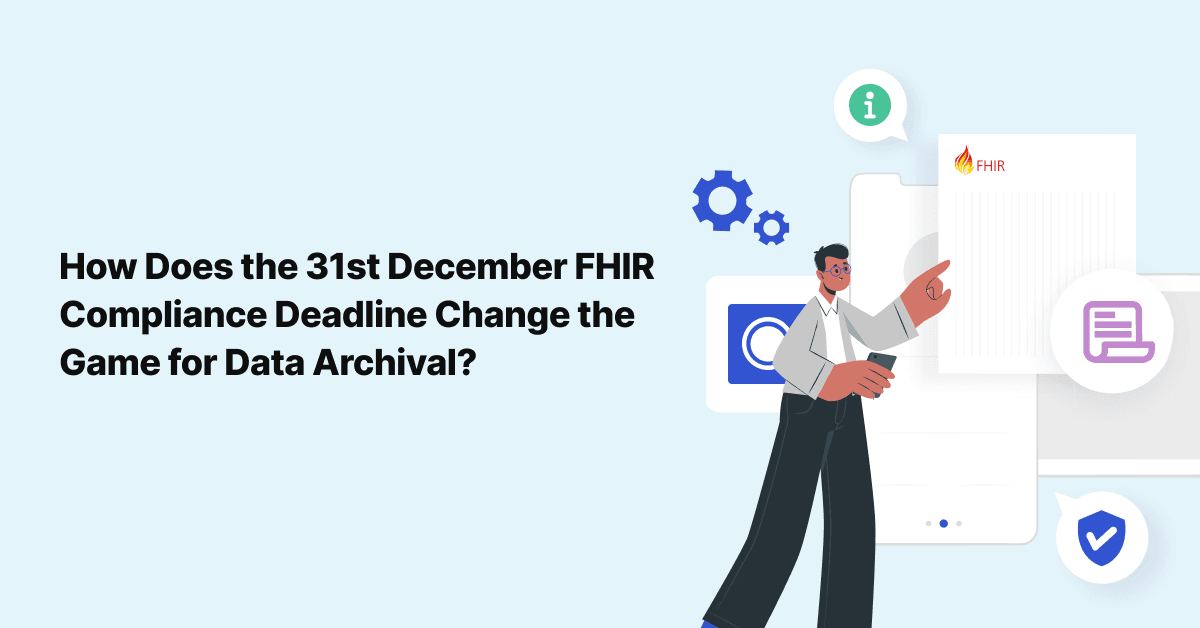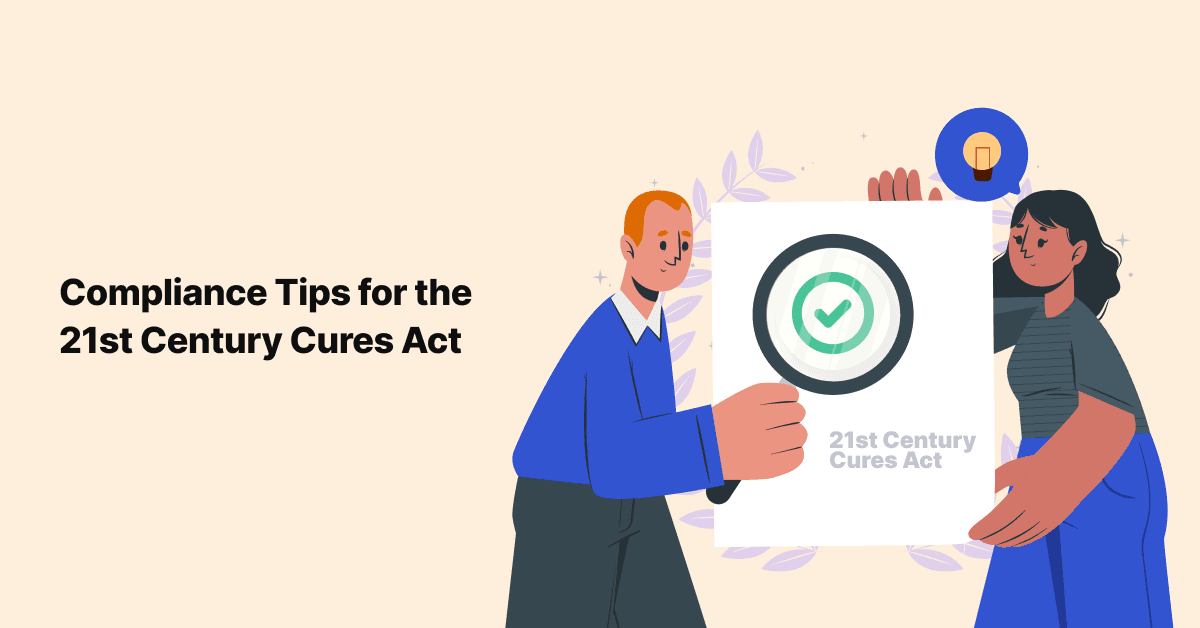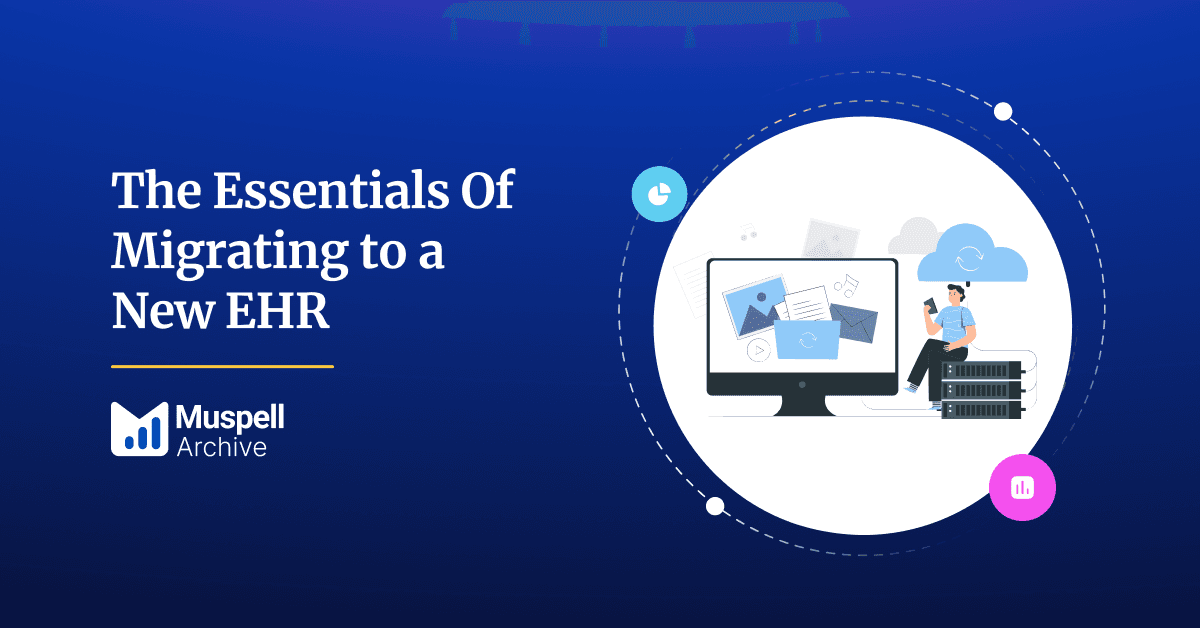
How Will the FHIR Mandate Impact Your Data Archival Strategy?
The ONC’s Cures Act, which is otherwise referred to as the 21st Century Cures Act, was enacted and signed into …

The 21st Century Cures Act (“Cures Act”) was signed into law in December of 2016 with authorized funding of $6.3 billion. It was directed to the National Institutes of Health (NIH) for multiple varied initiatives focused on population health. After quite a few years of work, the Cures Act resulted in two rules: the ONC Cures Act Final Rule and the CMS Interoperability and Patient Access Final Rule. Both rules aim to provide patients with better access to care, ensure the implementation of newer standards that would enable greater access, and coordination in patient care.
In this article, you will learn about:
The ONC's Final Rule majorly talks about the patients' electronic access to their health data. However, with the understanding that this is the prime goal, the rule also supports the provider's needs in areas like clinical data sharing and addressing the industry-wide information blocking practices that EHR providers have often stipulated. While electronic access to medical records on the part of the patient was an existing requirement under the new Meaningful Use guidelines from 2018; the shift in focus here is to provide it in such a way that it enables health IT developers to create the next-gen applications with the capacity to power healthcare, as we transition into the world of value-based care and beyond.
The Final Rule has brought about the following changes:
The rule stresses the importance of patients having access to their Electronic Health Information (EHI) when required and in the format they would like to consume. Therefore, it becomes mandatory for providers to ensure that the patients are provided with programmatic access to the EHI contained in their systems through the HL7 FHIR® APIs so that patients get to access such data using the web or through smartphone applications.
A gag clause refers to a provision of a contract that exists between a managed care organization and a health care provider. It generally restricts the amount of information a provider could share with a beneficiary or that limits the circumstances under which a provider may recommend a specific treatment option. EHR providers often block physicians’ efforts to improve the usability and security of their systems and workflows by including language in the contracts. This rule ensures that the “Gag Clauses” in EHR vendor contracts are prohibited.
This rule requires patients to be provided with better access to their medical records and states that fines for compliance could go up to $1 Million per violation.
Patients are now free to request their data at any time in a fully automated manner, thereby eliminating all the administrative work required to enable patient access to their medical data. This has already been a requirement under the law through the Meaningful Use changes in 2018. As a result, clinicians can now focus on providing care without worrying about providing patients with medical record access.
CMS recently introduced new interoperability mandates for healthcare providers based on the Cures Act regulations that must be implemented by July 1st, 2021.
The new mandate stresses the following:
All hospitals are expected to fulfill the requirement of sending Admission, Discharge, and Transfer (ADT) messages to other providers who are also involved in the provision of patient care. The goal of this requirement is to facilitate improved care coordination across providers to enable other providers to reach out to patients post-discharge and ensure that their follow-up care is implemented correctly.
Admission, Discharge, and Transfer Information.
CMS recently introduced new interoperability mandates for health plans (MA organizations, Medicaid FFS programs, CHIP FFS programs, Medicaid Managed Care Plans, and CHIP Managed Care Entities) based on the regulations of the Cures Act that must be implemented by July 1st, 2021.
These include:
Payers are required to make patient claims and encounter data available through the Patient Access API; this would include the cost and also a defined subset of members’ clinical information that must be available to third-party applications of their choice through a secure HL7 FHIR® (Release 4.0.1).
Adjudicated claims (including pharmacy), encounters with capitated providers, provider remittances, enrollee cost-sharing, and a subset of clinical data, including lab results ( maintained under the impacted health plan).
Health plans must make available FHIR® API-based list of providers that are in-network through a public-facing digital endpoint on the payer’s website. In addition, provider directory updates must be available through an API within 30 days of receipt of new data or changes to existing directory data.
Provider names, network status, addresses, phone numbers, and specialties.
Payers must fulfill the requirement of permitting the exchange of patient data at the member’s request so that members can take all their data with them as they move between payers using the clinical data specified under U.S. Core Data for Interoperability (USCDI) version 1.
CURES 2.0 (Controlled Substance Utilization Review and Evaluation System) is a database of Schedule II, III and IV controlled substance prescriptions dispensed in California, serving the public health, regulatory oversight agencies, and law enforcement. California law (Health and Safety Code Section 11165.1) lays down a requirement for all Californian licensed prescribers authorized to prescribe scheduled drugs to register for access to CURES 2.0 by 1st July 2016 or upon issuing a Drug Enforcement Administration Controlled Substance Registration Certificate, whichever occurs later.
Create an integration solution with the local EMR of the healthcare provider using the web service that is offered by the state of California - https://oag.ca.gov/cures/iews
The ONC Cures Act Final Rule and the CMS Interoperability and Patient Access Final Rule were enforced with the intent to provide patients with enhanced care and make them free from any worries about accessing their health data. The rules also help the caregivers focus on providing care and not be burdened with anything else. As far as the providers are concerned, the standards set by both the rules help with integrating newer applications into the workflow. This solution approach suggested in the article could help providers and payers satisfy the requirements of easy and inexpensive access to patient health data while ensuring smooth compliance with the 21st Century Cures Act.
Join over 3,200 subscribers and keep up-to-date with the latest innovations & best practices in Healthcare IT.

The ONC’s Cures Act, which is otherwise referred to as the 21st Century Cures Act, was enacted and signed into …

Access to health information by the patients or providers has always been a tedious and time-consuming …

Migrating to a new Electronic Health Record (EHR) system is a critical decision for healthcare organizations …